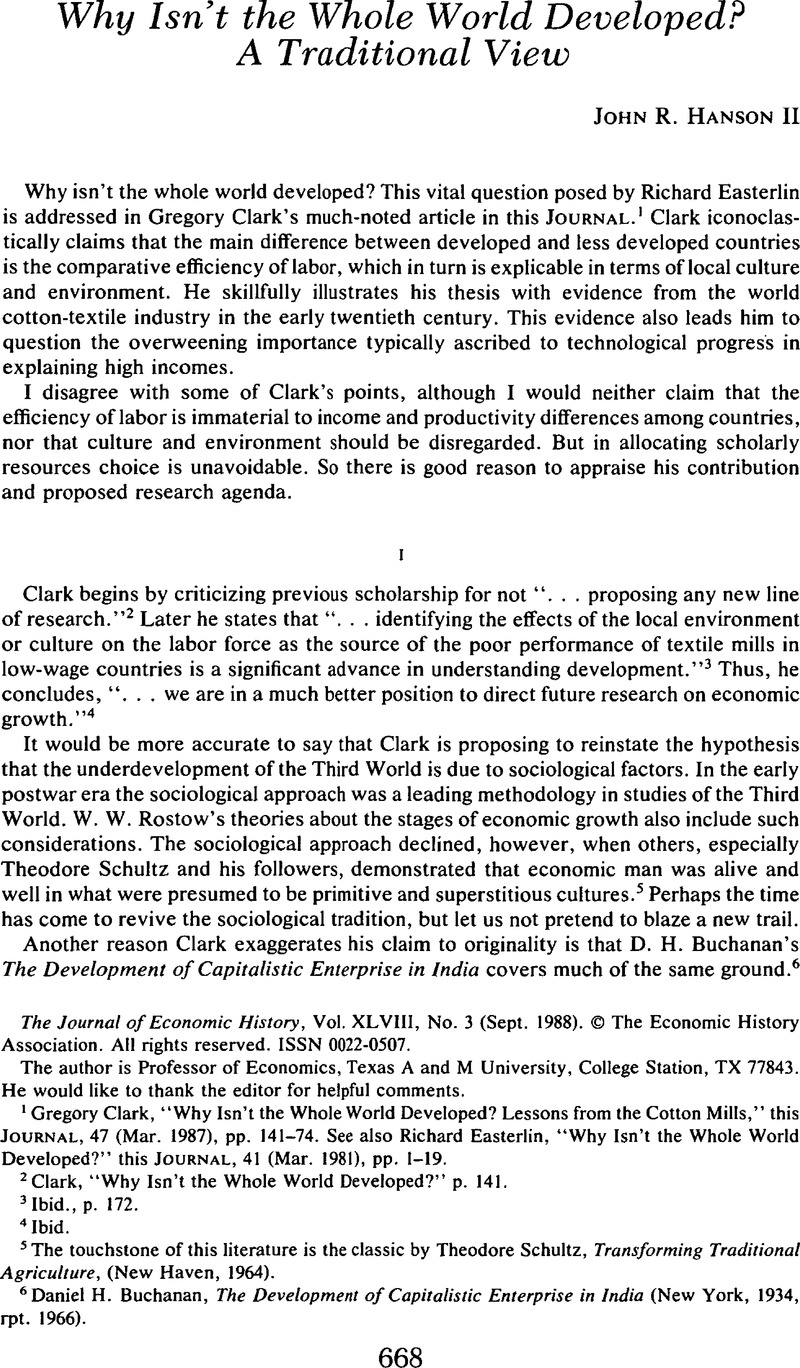Published online by Cambridge University Press: 03 March 2009

The author is Professor of Economics, Texas A and M University, College Station, TX 77843. He would like to thank the editor for helpful comments.
1 Clark, Gregory, “Why Isn't the Whole World Developed? Lessons from the Cotton Mills,” this JOURNAL, 47 (03 1987), pp. 141–74.Google Scholar See also Easterlin, Richard, “Why Isn't the Whole World Developed?” this JOURNAL, 41 (03 1981), pp. 1–19.Google Scholar
2 Clark, , “Why Isn't the Whole World Developed?” p. 141.Google Scholar
3 Clark, , “Why Isn't the Whole World Developed?” p. 172.Google Scholar
4 Clark, , “Why Isn't the Whole World Developed?” p. 172.Google Scholar
5 The touchstone of this literature is the classic by Schultz, Theodore, Transforming Traditional Agriculture, (New Haven, 1964).Google Scholar
6 Buchanan, H., The Development of Capitalistic Enterprise in India (New York, 1934, rpt. 1966).Google Scholar
7 Buchanan, H., The Development of Capitalistic Enterprise in India (New York, 1934, rpt. 1966). 361.Google Scholar
8 Buchanan, H., The Development of Capitalistic Enterprise in India (New York, 1934, rpt. 1966). 372.Google Scholar
9 Buchanan, H., The Development of Capitalistic Enterprise in India (New York, 1934, rpt. 1966). 382–86.Google Scholar
10 Maddison, Angus, “A Comparison of the Levels of GDP Per Capita in Developed and Developing Countries, 1700–1980,” this JOURNAL, 43 (03 1983), table 2.Google Scholar
11 Most of the actual data used are found in Hanson, J. R. II, “Export Shares in the European Periphery and the Third World before World War I: Questionable Data, Facile Analogies,” Explorations in Economic History, 23 (01 1986), pp. 85–99.CrossRefGoogle Scholar
12 Buchanan, , Development of Capitalistic Enterprise, p. 362.Google Scholar